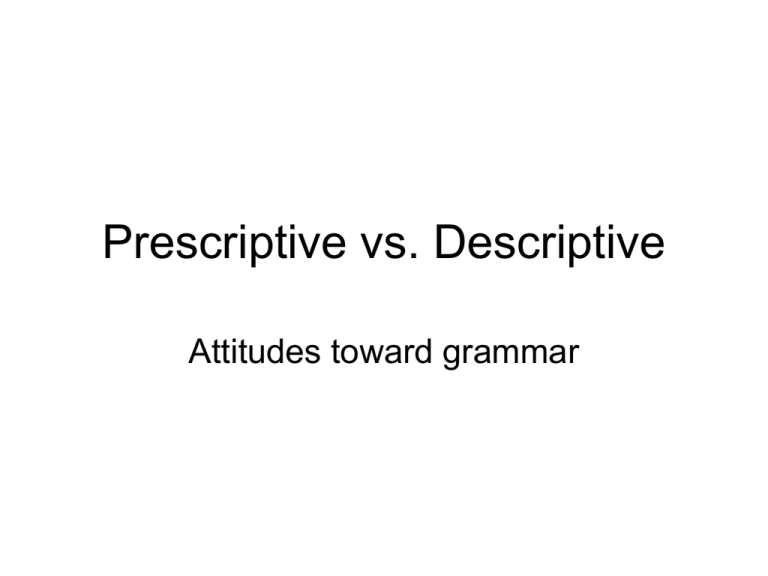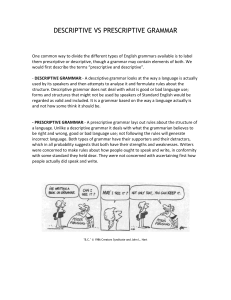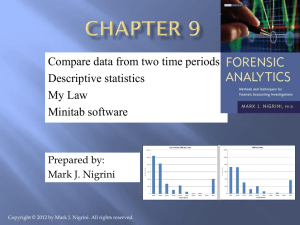Prescriptive vs. Descriptive
advertisement

Prescriptive vs. Descriptive Attitudes toward grammar Descriptive VS. Prescriptive grammar: What are rules? • Prescriptive (traditional) approach: Attitudes toward language based on what is held to be “correct” by socially prestigious elements and by teachers Prescriptive (traditional) approach This attitude evinces complete disregard for the way a community actually speaks Prescriptive grammar • Certain forms of language are seen as more “correct” than others as a result of the social prestige associated with their users The prescriptive attitude seeks to enforce those Prescriptive grammar Examples of common prescriptive rules • • • • Do not use ‘ain’t’ Do not use a preposition to end a sentence with Pronounce the -ing at the end of words, not -in’ Do not split infinitives: “to boldly go where man has never gone before” is wrong, they say Descriptive VS. Prescriptive grammar • Which of the following participles are “correct”? • Kneel kneeled/knelt • Knit knitted/knit • Lean leaned/leant • Leap leaped/leapt • Bid bidden/bade Which is “correct”? • • • • • • • Buy Spell Forecast Shave Dive Drag Spell bought/boughten spelled/spelt forecast/forecasted shaved/shaven dove/dived dragged/drug spelled/spelt Which is correct? • Are people who use other forms stupid? • Are they socially undesirable? • Why do we think so? Descriptive VS. Prescriptive grammar Descriptive approach: • Observe principles that describe the way the language is actually spoken Descriptive approach • The goal of the descriptive approach is a description and knowledge of rules (principles) of how the language is actually spoken Descriptive grammar • • • • Examples: Many speakers pronounce ‘-in’ for the (-ing) suffix In oral speech and most written language we say prepositions at the end of sentences Some dialects of English do not pronounce –r after vowels In English, qualifying words often appear between the to and the verb in infinitive phrases: “to boldly go where man has never gone before” Teaching grammar • Descriptions of a language used for teaching purposes • Do not confuse this with Prescriptive grammar — isn’t teaching for language learners based on how the language is spoken? Linguistic competence Linguistic competence: • knowledge of our language and ability (capacity) to produce utterances Goal of study • The goal of our study is descriptive • By observing a language as it is actually used • We can learn about the knowledge that speakers have of the language Linguistic competence • This involves our knowledge of how our language works Linguistic competence • This knowledge can be observed and described, in the form of the speech that results from it • Thus descriptive grammar Communicative competence • The linguist Del Hymes stated that if a child could make any possible sentence in the language, we would think he was insane Communicative competence • Our communicative competence involves our knowledge of the speech appropriate in each situation • and how to do what we use language to do Descriptive focus • Our course emphasizes a descriptive focus • We are interested – in the language that is actually used – how speakers use it – what they use it to do









